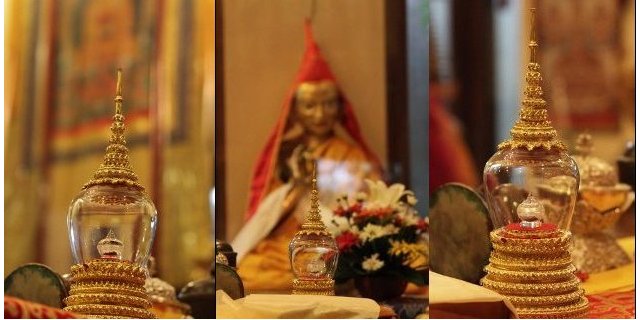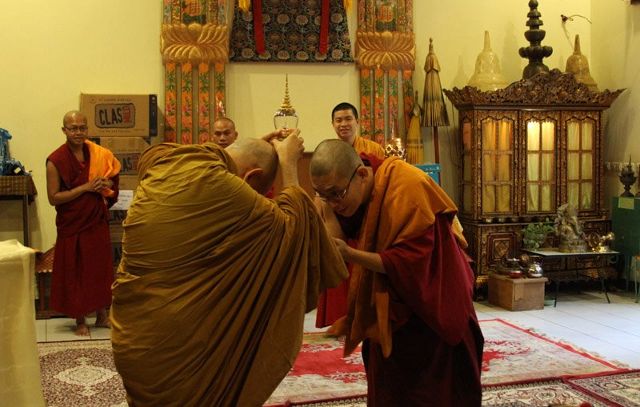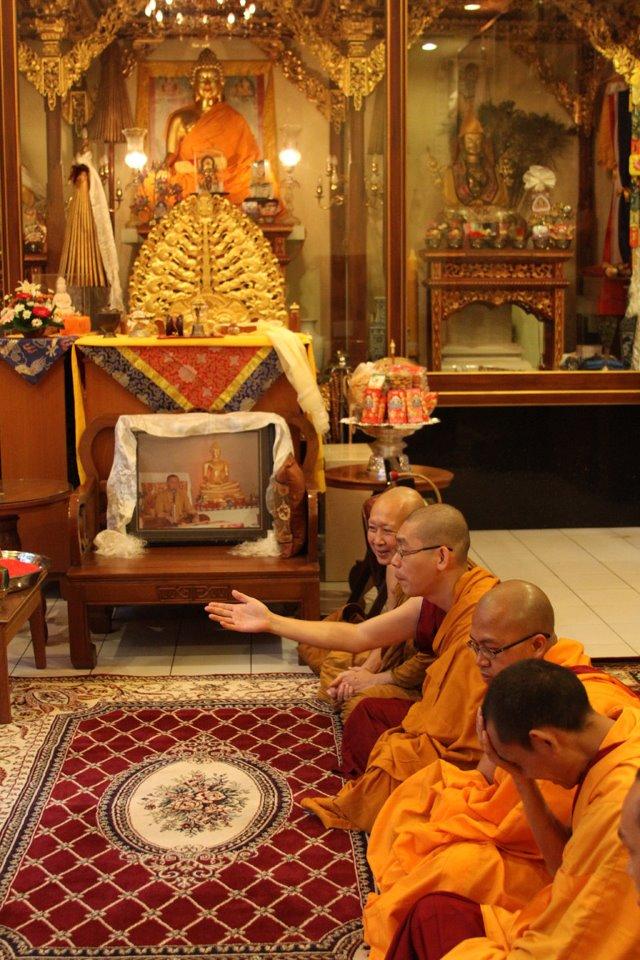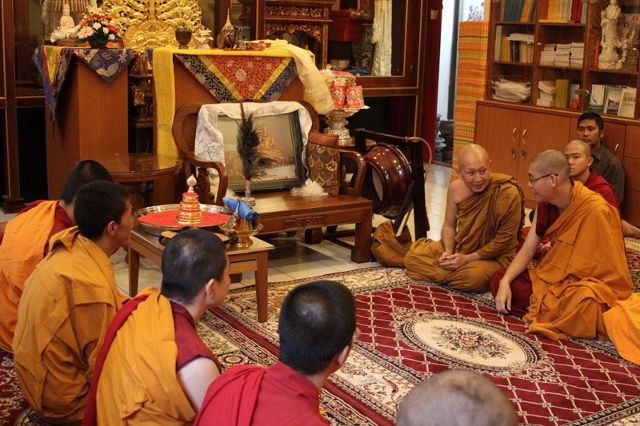
Encounter of Great Master Atisha with Guru Suvarnadvipa – Intertwining Back of the Affectionate Bond
Foreword from His Holiness Dalai Lama
This booklet, the work from Indonesia photographer, Rio Helmi, who has been practicing Tibetan Buddhism for many years, telling about the history of Jowo-jé Atisha, A Buddhist’s Great Master from India who in the late years of his life has a tremendous impact to the Buddha Dharma development in Tibet. He is not just an intellectual expert, Atisha also famous of his willpower and very disciplined in spiritual practice. Besides, apparently he is a brave person, this can be seen from both of His journey outside of His birthplace, India. The first is a far expedition to Sumatra Island in Sriwijaya, a kingdom located in a nation now we called as Indonesia, as for the second is journey across the Himalayan Mountains in Tibet. Now a day, the trip to that destination and distance perhaps isn’t amusing, however at the Atisha’s times, such journey undoubtedly is full of danger and uncertainty.
Although He has studied with so many teacher, Atisha depart to Sumatera because He want to understand more about enlightened mind Boddhicitta, the heart practice of a Bodhisattva. He heard that the most famous Master of such practice is Dharmakirti from Suvarnadvipa or Sumatera, in which we Tibetan called as Lama Serlingpa. Because of that, He spend twelve years with Dharmakirti and master the both main way to generate enlightened mind: exchanging self with others also seven points of cause and effect, He teach both of the technique in Tibet.
At a later time, Atisha come to Tibet when Jangchub Ö is reigning and spend around seventeen years in Tibet. Therefore, He is dedicating the last years of his life for Dharma in Tibet, re-establish in the places of where the Dharma has been lost, strengthen the place of where the Dharma, including Sutrayana and Vajrayana, within one equal opportunity. He also re-establishes the temples in Tibet and underlining the ethical behavior and moral principle as the essence of Buddhist practice.
Because requested by Jangchub Ö to give a meritorious teaching for his people, Tibet in general. Atisha compose the Lamp of the Path which summarize the main points of either sutra or tantra in a gradual method and easy to follow. This text which launch the great learning tradition and practice of The Stages of the Path to Enlightenment (Lamrim) in Tibet.
As of now we still have the access to all aspect of the Sutrayana and Vajrayana path is due to the skillfulness and kindness which reflect in Atisha presentation of The Path. Moreover, He specifically advise to meditate on enlightened mind Bodhicitta which based on love and compassion. He makes it as His main practice and suggest His disciple to do the same. I frequently contemplate that if we can undertake this suggestion, His kindness will be recompensed; or at least some of His wish is fulfilled.
21 March 2012
*His Holiness Dalai Lama 14’s foreword to the book entitled “Jowo Atisha – India, Sriwijaya, and Tibet – a brief history of Great Master Atisha Dipamkara Sri Jnana” composed by Rio Helmi, Suvarna Dharma Cakra Loka Foundation, Bali, 2012.
Chapter VI – ENCOUNTER WITH GURU SUVARNADVIPA
Then the ascetic face Guru Dharmakirti Suvarnadvipa and said: “Please listen to us, O Glorious Guru. Today, the abbot from India namely Dipamkara Shri Jnana include with one hundred twenty-five followers has arrived. Sail through the great oceans for fourteenth months, they have conquered mara, heretic, and mahesvara by contemplating maitri and karuna. They arrive at our hermitage without visible sign of fatigue from their body, speech, and mind. And we after the fourteenth days hearing His dharma’s sermon are full of rejoice and happiness. Now He want to meet with Guru. The Great Pundit want to deepen the Prajnaparamita which has been giving birth to all Buddha from the three times, and also want to develop Bodhicitta and all achievement which take root from it until the supreme joy. He also wants to practice Mahayana and other doctrines which reside on the oceans teaching of Guru during the day and night. Thus, from your deep compassion, please kindly give the chance to Him.
Hearing those words, Guru Dharmakirti Suvarnadvipa replied:
“How glorious, the lord of the earth has arrived!
How glorious, the son of the king has arrived!
How glorious, the master of all sentient being has arrived!
How glorious, the noble hero has arrived!
How glorious, He has arrived with his followers!
How glorious, He has conquered all of the obstacle!
How glorious, His reputation is wide spread!
How glorious, He has come with upright!
O monks, wear your robe and prepare the greeting to Your Honor.”
Not for long they are ready: five hundred thirty-five monks wearing the complete three robe and taking jar-for-holy-water and cymbal. Accompanied by sixty-two samanera, and lead by Guru Dharmakirti Suvarnadvipa Himself, their group that have been ordained with total of five hundred ninety seven people. From afar, the Dipamkara Shri Jnana’s group very impressed by this entourage group.
Dipamkara Shri Jnana and His group spontaneously do full prostration to greet the arrival of Guru Dharmakirti Suvarnadvipa, and vice versa Guru Dharmakirti Suvarnadvipa and His Group also do the full prostration. Dipamkara Shri Jnana present so many goods, jewels, and golds which is very precious. The follower of Dipamkara Shri Jnana presenting one gold coins to each of Guru Dharmakirti Suvarnadvipa’s disciple.
Their encounter is very touching, both Dipamkara Shri Jnana and Guru Dharmakirti Suvarnadvipa, remembering their relationship as Disciple and Guru for many times of reincarnation. Guru Dharmakirti Suvarnadvipa presenting Buddha statue to Dipamkara Shri Jnana and foresee that one day Dipamkara Shri Jnana will go to the “Snow Land” (Tibet).
Dipamkara Shri Jnana reside in the Silver Parasol Palace in Suvarnadvipa for twelve years. During that time, He sleep on the floor, on the toe of His Guru’s bed. Beside studying all aspect of Bodhicitta, He and His Group firstly receive the teaching of Abhisamayalamkara for fifteenth sessions, then the instruction of Prajnaparamita sutras in accordance with that derived by Maitreya to Arya Asangha, then gradually learning all aspects from vast activity lineage of Maitreya and Arya Asangha, and also the method of Bodhicitta generation “Equalizing and Exchanging Self with Others” which attained by Santideva directly from Manjushri Buddha. This last one is quite interesting as Guru Dharmakirti Suvarnadvipa also master the method of Bodhicitta generation called “Seven Stage of Cause and Effect”, and in oral tradition also has derived the method which combine those two method. After learning and practicing all of this, Dipamkara Shri Jnana achieve Bodhicitta realization.
At the age of 45, Dipamkara Shri Jnana return to India. He has studied with 157 teachers, however every time He called or heard the name of Guru Dharmakirti Suvarnadvipa, immediately His tears flow down. One time, one of His disciple asking whether Guru Dharmakirti Suvarnadvipa is His closest Guru, Dipamkara Shri Jnana then replied: “I don’t discriminating my Gurus. Nevertheless, it is due to the kindness of Guru Dharmakirti Suvarnadvipa that I attain the peace of mind and the essence of Bodhicitta.”
Cited from “Jowo Atisha – India, Sriwijaya, and Tibet – a brief history of Great Master Atisha Dipamkara Shri Jnana” composed by Rio Helmi, Suvarna Dharma Cakra Loka Foundation, Bali, 2012, page. 26-27.


